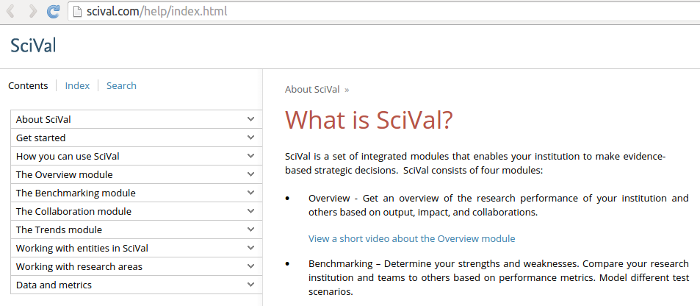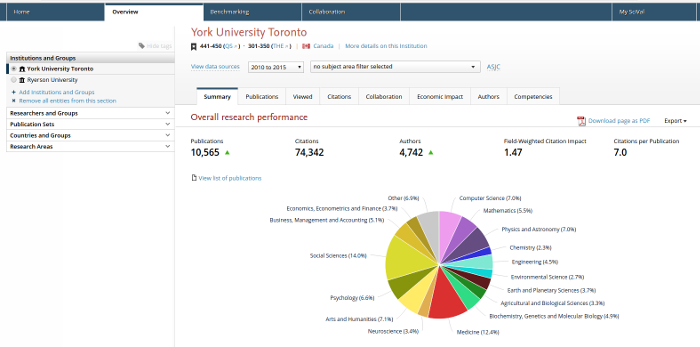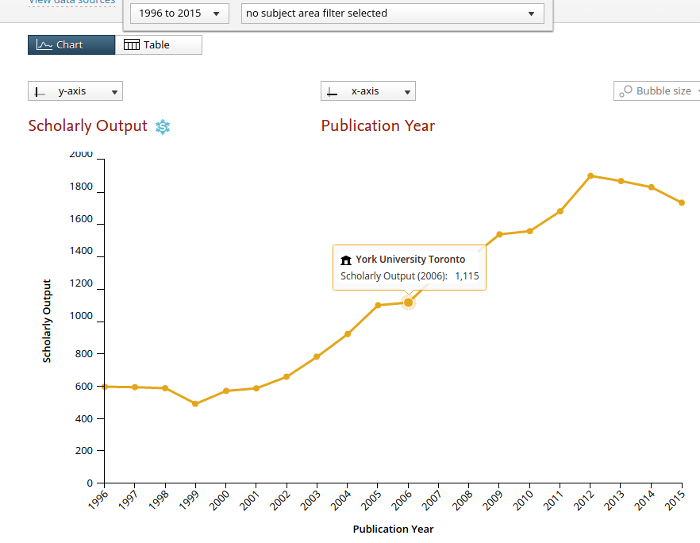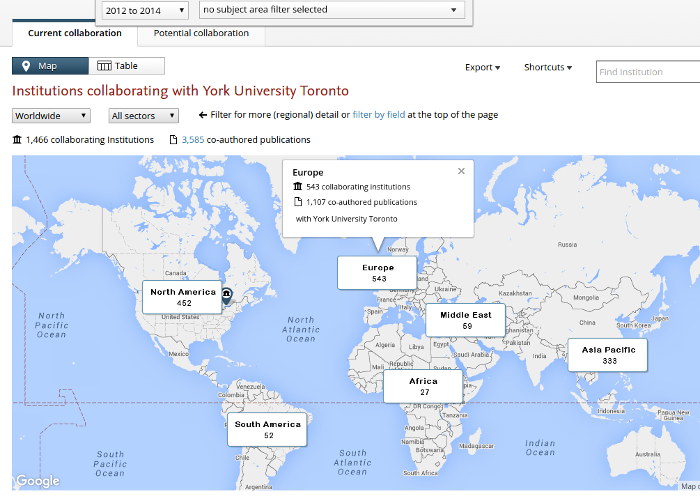Elsevier’s SciVal requires users to have an account, but any York person can create one with their York email address.
SciVal draws its citation information from Scopus. As of March 2016 they describe their sources so:
The Scopus database covers over 30 million publications from 1996 until the present:
• 21,000 serials from 5,000 publishers. These include:
• 20,000 peer-reviewed journals
• 390 trade publications
• 370 book series
• 5.5 million conference papers
Additionally SciVal uses usage data from ScienceDirect the world’s largest scientific full text database with more than 2,500 journals and 26,000 books.
Help
A full online help manual is available, but you must be logged into SciVal to see it. The SciVal Metrics Guidebook is available.
What's in SciVal
There are three sections: Overview, Benchmarking and Collaboration.
Below is the basic overview of York. It can be refined to great detail, but the overview shows the emphasis on STEM disciplines.
Benchmarking compares York and its units to other institutions in many ways. Here is one of the most basic views: total publications by year (not being compared to any other university).
Collaborations shows where and with whom research and publications have been done.
Similar tools
InCites, owned by Clarivate Analytics, and Scimago Institution Rankings, owned by Scimago, are similar to SciVal, but York does not subscribe to them. You may see other universities using them for rankings.




